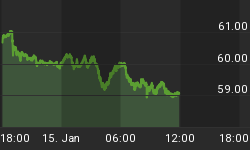The following is part of Pivotal Events that was published for our subscribers April 21, 2011.
SIGNS OF THE TIMES:
"Stocks climbed as better-than-expected data on confidence and manufacturing bolstered optimism on the economy."
- Bloomberg, April 15, 2011
"U.S. Factories produced more consumer goods, business equipment and raw materials in March, boosting manufacturing for the ninth month."
- AP, April 15, 2011
"Bank of England Chief Economist Spencer Dale says that 'significant' staff shortage will force him to cut back on research for policymakers."
- Bloomberg, April 18, 2011
This prompts little dismay as all the politicians and bureaucrats need and understand is "stimulus". They become perplexed with the concept of state theft.
Less research staff at a central bank reminds of the 1934 book on the markets The Battle For Investment Survival. Author Gerald Loeb's assessment of equity researchers is a classic:
"In a bull market who needs them and in a bear market, who wants them?"
This would also apply to central banks themselves.
* * * * *
The Big Picture
The structure of this speculative top continues to build.
The mid-point of the surge would likely have been in March, with precious metals running longer. Crude was likely to rally through April.
The latter has been helping the stock market - to the point of prompting an anecdotal indicator of a business cycle peak. Wall Street pundits are into cause and effect reasoning and are worried about high crude oil and gasoline prices. The theory is that the latter is a form of taxation that exhausts the consumer which initiates the recession.
This suggests that prior to the automobile there were no recessions.
The usual 3 to 4-year business cycle has been well-documented back to the early 1500s and the tops were accompanied by soaring commodity prices and the troughs by depressed commodity prices. If the crash is severe it seems to prompt intellectuals to fantasize about a "fund of credit" that will make the hard times go away or if cleverly timed will prevent hard times and unemployment.
These seem based upon personal revelations rather than upon historical evidence. In the 1618-1623 financial crash, Edward Misselden theorized that throwing credit at a credit contraction would make it go away. It is doubtful that he had access to a few hundred years of market history. It is doubtful that he was a successful trader who would take advantage of dramatic changes and would never dream that some scheme could prevent market violence.
In the early 1700s John Law became the first reckless central banker by claiming that an artificial increase in money supply would increase employment.
Then the post-1929 contraction stimulated the biggest financial charlatan in history. Prior the crash Keynes was lucid, after the crash he became obsessed with personal revelations that throwing credit at a credit contraction would make it go away. In so many words, Keynes took a bath in the 1929 crash and invented the "liquidity preference".
To be serious, some years later Hayek observed that Keynes was "ignorant" of economic history.
As anyone with trading experience would understand, Keynes' theories advanced not on merit, but only because currency depreciation transferred immense wealth and power to statists.
And, with the dollar setting new lows for the move, Keynes and the state seem very much in control.
These were the popular convictions in 2000 and 2007 as well as of significant focus during the commodity booms of 1973 and 1980. Dreads about Keynesian depreciation were rampant until both of the latter failed.
Focus
It seems that on a great speculative surge there will be something to indicate the probable end. For us in 2000 it was the count on the number of months that a market will soar against rising interest rates. Using earlier examples the typical run was some 18 months and that counted out to March 2000. We discussed this from January 2000 until the blow out completed in that fateful March.
In 2007 we noted that the hot action typically ran against an inverted yield curve for 12 to 16 months. Going into the end we frequently reviewed that June would be the 16th month. Credit markets began their turn to disaster in that fateful May.
Interest rates and the treasury curve are providing no such guidance on this extravaganza. Fortunately, our Momentum Peak Forecaster has been guiding.
For new readers this has been calling for an exciting peak around March. Back in December this was a long-term model.
On the near-term we thought that the silver/gold ratio could reach an excess, providing the "sell" signal. This seems at hand.
The Chartworks registered an Upside Exhaustion that calls for a high in silver and the silver/gold ratio for around next week.
Now we turn to a simpler way of measuring excess. Momentum on the silver/gold has soared to a Daily RSI of 90, which compares to the 85 level reached in November that anticipated the correction for silver from 30.44 to 26.
However, 90 is exponentially higher and compares to the 93 reached with the futile attempt to corner silver in 1979. Historically, there have been a number of attempts to corner anything. All have been followed by widespread financial distress.
We have been noting that this time around the Forecaster reached 1.28 which suggested that the action may not become as outstanding as in 1980 when it reached 1.37. Yesterday's ChartWorks updated the study on real prices for gold and silver. The key for now is that real prices are not as sensational as in 1980, but the dynamics on the nominal price are in dangerous territory.
Ross advises that if silver's rise continues into next week it will register the Upside Exhaustion on the weekly reading. With the daily, weekly and monthly readings this could be called a Momentum Trifecta. Only two are needed to end the frenzy.
Link to April 22 ‘Bob and Phil Show’ on Howestreet.com: http://talkdigitalnetwork.com/2011/04/momentum-trifecta/
















